Read all about it: City library keeps up with changing times
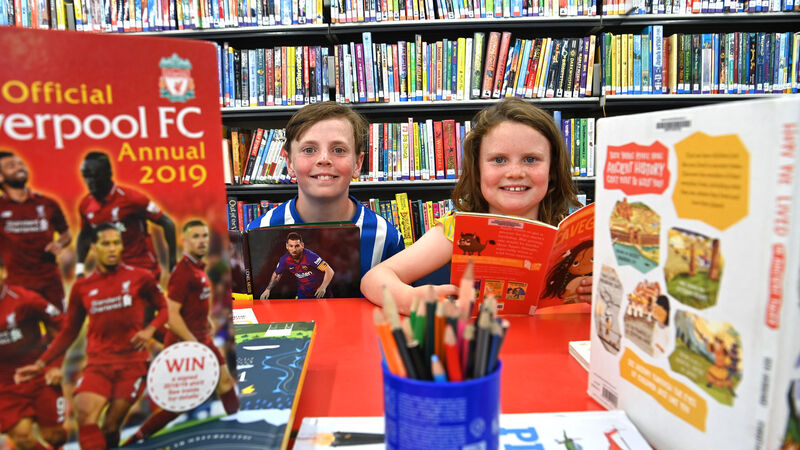
Tadhg and Cliodhna Rose McMahon in the children's library at Cork City Library. Picture Dan Linehan
WHEN you walk into Cork City Library from the Grand Parade, you’ll like as not be welcomed by David Barrett, the porter for the past six years. He says library users are of all ages, from all walks of life.
“It’s just a lovely place, and it’s great to be a part of a place that belongs to everyone, where anyone can come in and sit down, and read, or just catch their breath,” Mr Barrett says.
“I get to meet everyone, from eight to 80, and younger and older, too, as they come in, and it’s nice to be able to help people, show them in and direct them to where they’re going, or give a person a hand with a buggy or a wheelchair.”
To the left, as you enter the library’s security doors, past Mr Barrett’s desk, is the child-and-adolescent library, and on Thursday mornings, it can be “manic” for storytime.
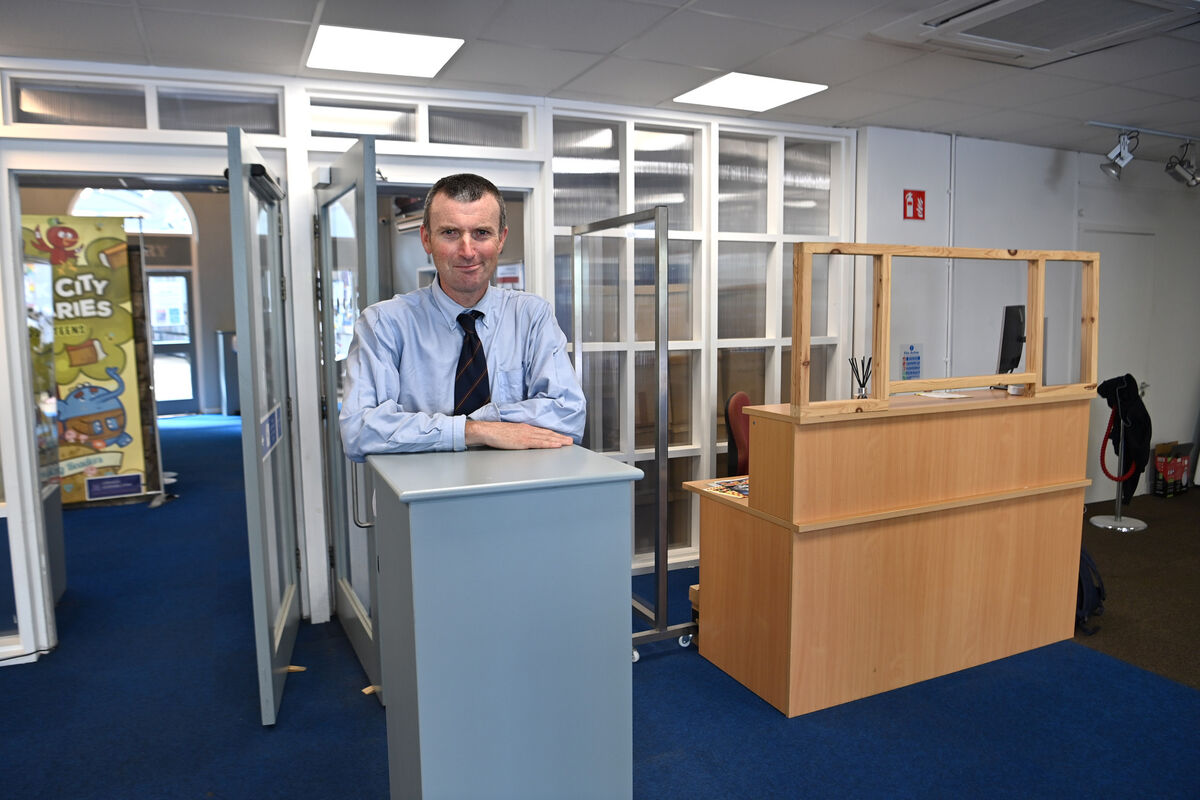
The children’s library is a bright, airy space, with a tiered reading area fitted with small, coloured tables and chairs, below cartoon lampshades and illuminated mobiles featuring teddy bears, helicopters, and aeroplanes.
The shelves are vibrant with the multi-coloured spines of different-sized books, and familiar childhood characters and authors include the Mister Men series, Enid Blyton, Roald Dahl, Nancy Drew, and the Hardy Boys.
The librarian’s desk is adorned with Pokémon pictures coloured by visitors, and beside it is an impressive collection of DVDs, among them Horrid Henry, Octonauts, Bob the Builder, and the Muppets.
Librarian Jonathan Fehilly says that while times and interests can change, some classics never go out of fashion.
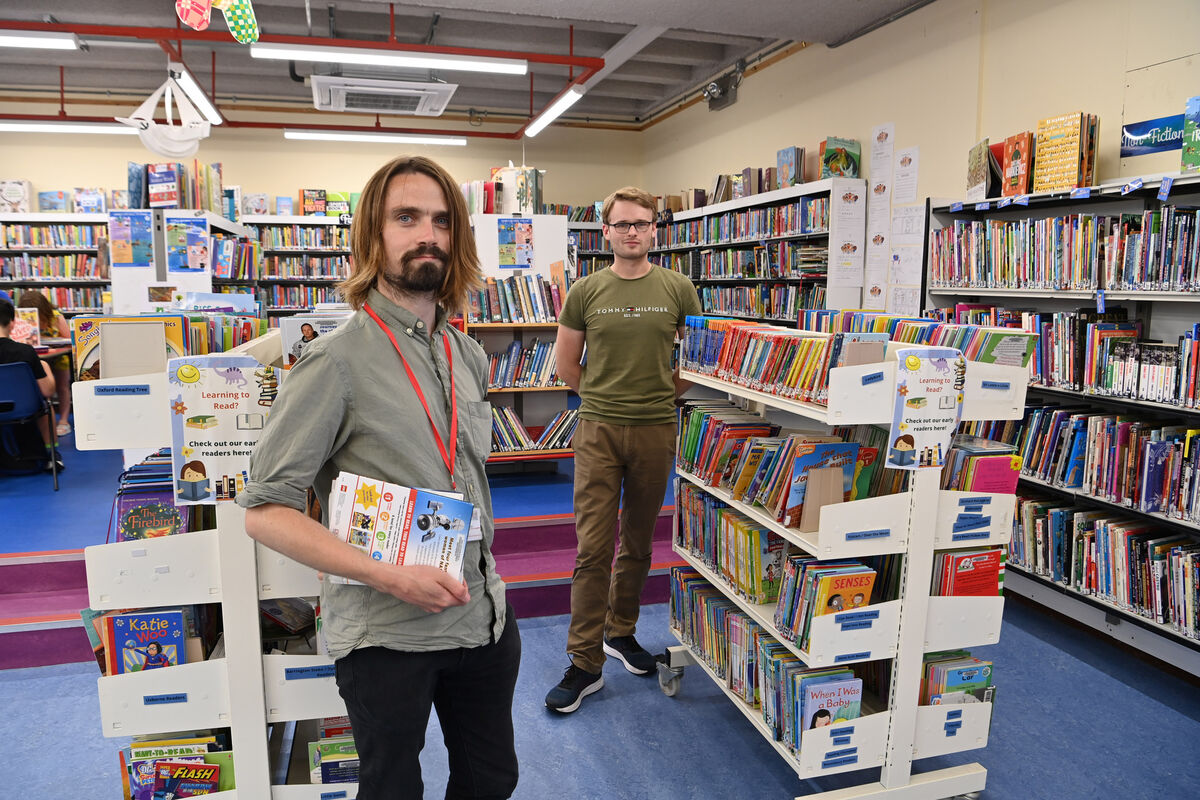
“Asterix and Tintin are still favourites with younger readers, and it’s nice to see new generations discovering them,” Mr Fehilly says. “Dog Man, by Dav Pilkey, the creator of Captain Underpants, is absolutely huge at the moment, as is Big Nate. Anything with a TV tie-in always does very well.”
He says that Derek Landy is a reliable favourite, and Cork author Louise O’Neill is popular with older teens.
“During term, we get different groups coming from the schools every day, whereas during the holidays we get younger readers often coming in with their parents,” Mr Fehilly says.
Through the main doors, past busts of Seán Ó Faoláin and Frank O’Connor, is the main library. This is the largest, and busiest, part of the building, and city librarian David O’Brien says it is a bustling social hub. “The realisation of the value of the library as a place of socialisation has grown and grown, with people coming into the library to meet their friends, people they know very well; it’s part of their daily routine,” Mr O’Brien says.
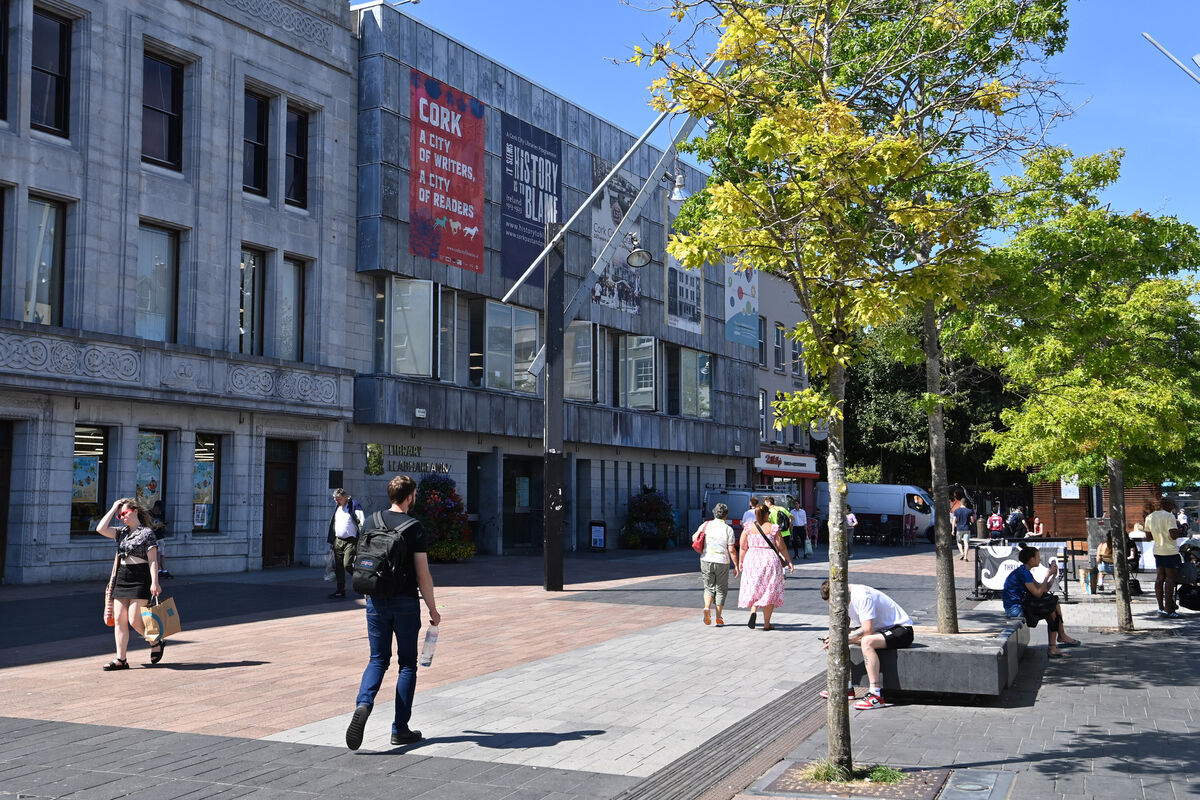
“We have lectures and events — I can’t even begin to count the number of events we have throughout the year — commemorations, the World Book Festival for literature, there’s music, there’s art activities, there’s book clubs, and that’s only here. Our network has 10 libraries and all of them contribute so beneficially to people’s lives.”
One policy that will never change in public libraries is that anyone can come in and sit down and read, or meet people, or just shelter.
“Anybody, regardless of who they are, is literally free to walk in, and as long as you abide by the very few rules there are, nobody will say ‘boo’ to you,” Mr O’Brien says

Nicola Lyons, acting executive librarian for the lending library, says the true-crime genre is popular, as is history, and audiobooks are, too.
Ms Lyons says librarians are delighted to help people find what they’re looking for, and sometimes what they never realised they were looking for.
“We will always find something for someone, and if someone doesn’t really know what they would like, we find, if we have a chat about the type of book they like, or the last book they enjoyed, we can go from there,” Ms Lyons says.”It’s always a pleasure to help people to find their next favourite book.”
To the back of the building is the Rory Gallagher music library. Outside is a display cabinet containing a replica of Rory’s Fender Sunburst Stratocaster guitar. An audio-visual display pauses on a section showing a competition advertised in the Evening Echo in April 1961. Later that month, a schoolboy, “Rory Gallagher, MacCurtain Street, Cork, one of the winners at the TV Talent Competition at the City Hall, Cork”, featured on the front of the paper.
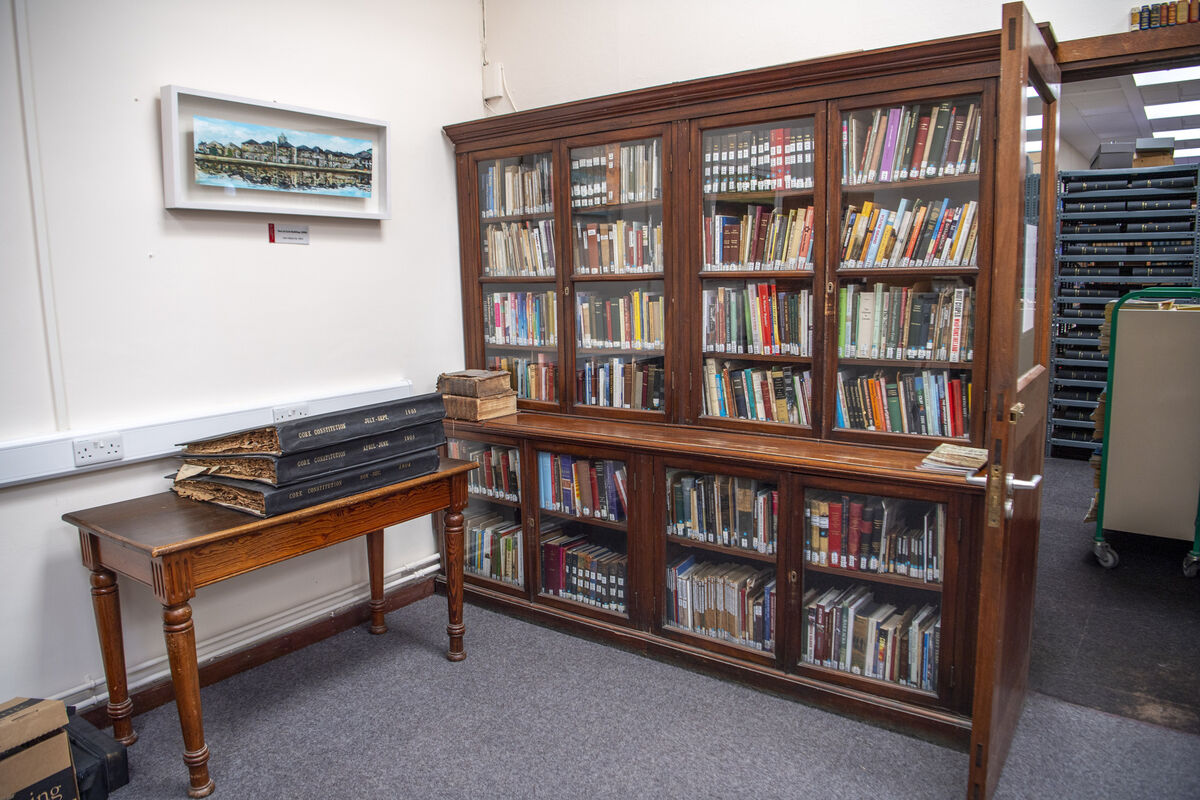
The way into the music library is decorated with more memorabilia, and a noticeboard advertises upcoming gigs and concerts, guitar lessons, cello lessons, violin lessons, and a course in making and repairing musical instruments.
Librarian Elaine Moynihan says that, unsurprisingly, perhaps, pop, that broadest of musical churches, is probably the most popular genre among visitors, although jazz and —appropriately enough, given Rory’s name over the door — blues are popular, too.
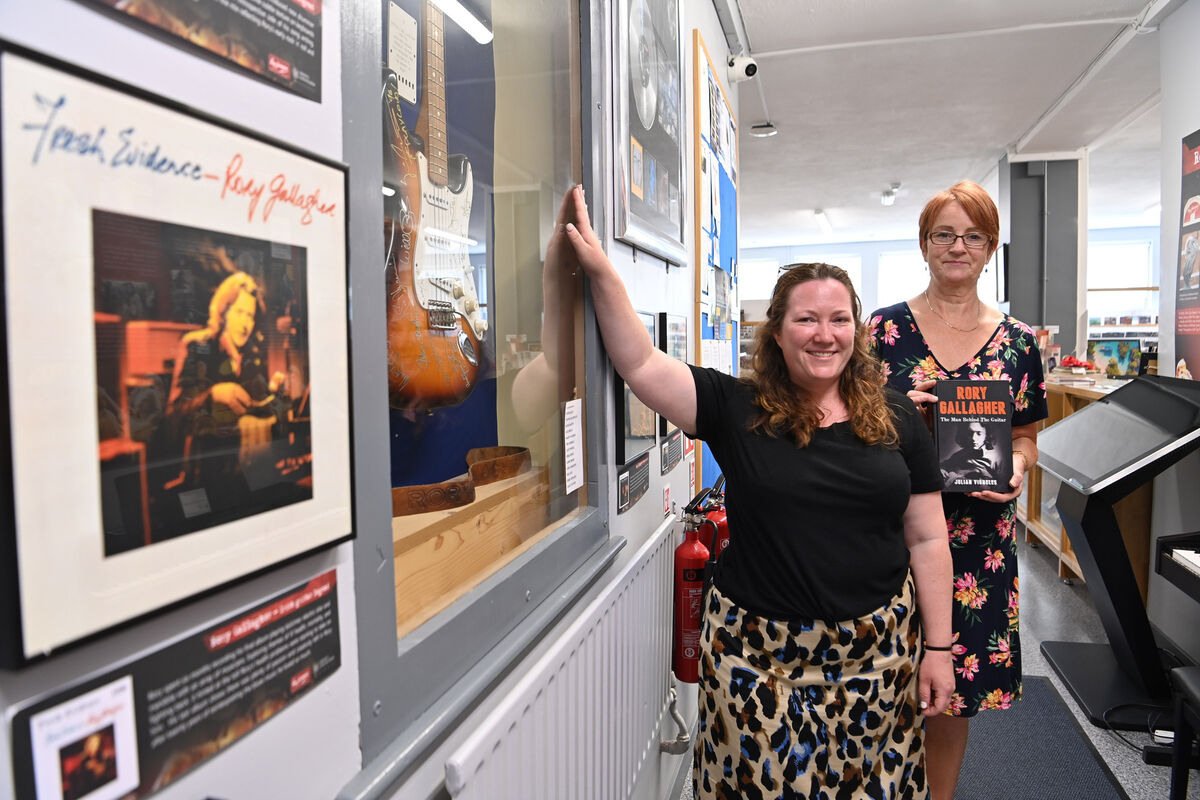
“Actually, we had a lady from Louisiana here recently: She had travelled all that way to visit Rory Gallagher’s hometown. We had a German couple, too, not that long ago, all kitted out in badges,” Ms Moynihan says. “Rory has touched so many people, and it’s hard to believe he’s gone since 1995, but he still means so much to people, and it’s great to be able to help people make that little connection to him.”
The music played here is chosen democratically, she says, by librarians and from suggestions made by the public.
Looking at the shelves, every taste in music seems to be catered for: From folk to rock, classical to pop, opera to sean nós.
Ms Moynihan’s colleague Michael Lynch says Cork’s music library is the finest in Ireland.
“In fact, it’d be interesting to know which library is considered to be the second-best,” Mr Lynch says.
On the first floor is the local-studies and learning library. This is a large, open room, at the centre of which are long tables.
Today, perhaps 30 people sit around, reading, studying, and working. Each desk is custom-built, with charging ports for phones and other devices.
David O’Brien says that this was previously the reference library, with the local-studies department on the library’s top floor, but the lack of a lift was one of the reasons local studies has been amalgamated with reference.
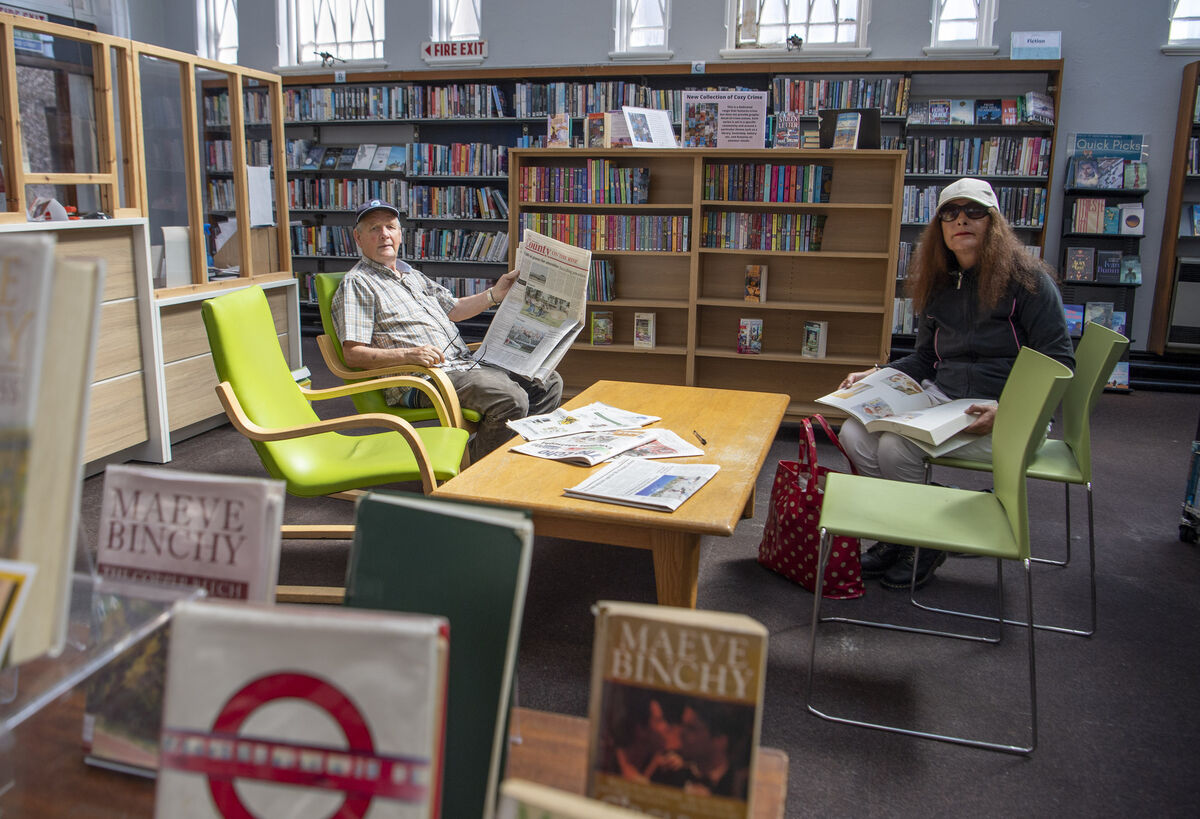
“This shows how the service is changing and ever-evolving, and in time we’re hoping that some of upstairs would become a makers’ space, so we would move into things like 3D printing, but also things like knitting, crocheting,” Mr O’Brien says
Some space would be retained for newspaper archives. Currently, upstairs in the stacks, daily and weekly history is lovingly bound in huge leather volumes. Every Evening Echo back to 1961 is kept here in hard copy. Editions prior to that, all the way back to the paper’s foundation in 1892, are available in digital form. Every Examiner back to 1980 is there in print, and digitised right back to 1841.
“That’s probably going to become a bit more restrictive, because newspapers that were supposed to last for a week or 10 days are 130 or 140 years old, and they’re falling apart, so we’re trying to digitise all of those now,” Mr O’Brien says.
“The first floor and second floor probably look different to people now than they did originally. We’ve reduced a certain amount of the book space and increased the study space, and that’s just a recognition that people are using their laptops more; you need Wi-Fi, you need the facility for trained staff who can answer your questions, more so than before, perhaps, when it was very much book-based,” he says.
The new city library, long-planned, will be better-equipped to address the evolving needs of the public, he says, and it is hoped that it will be built some time this decade, on the old Sir Henry’s nightclub site, a combined library and cultural space custom-built for the 21st century, a place that belongs to everyone, where anyone can come in and sit down, and read, or just catch their breath.
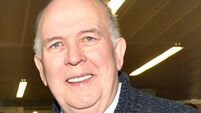
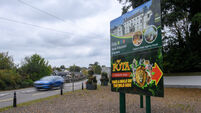




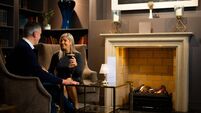
 App?
App?


